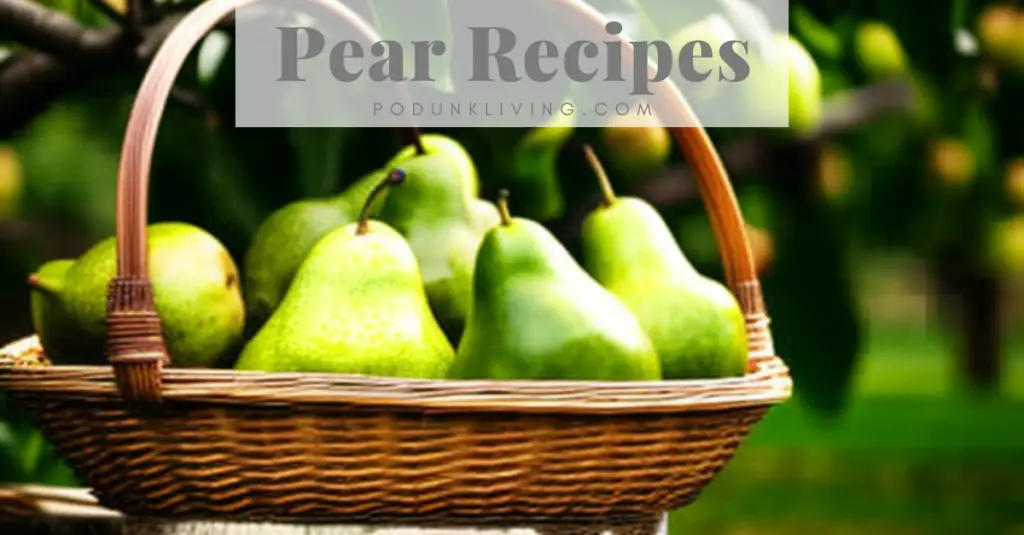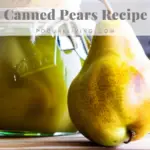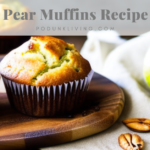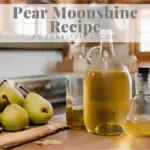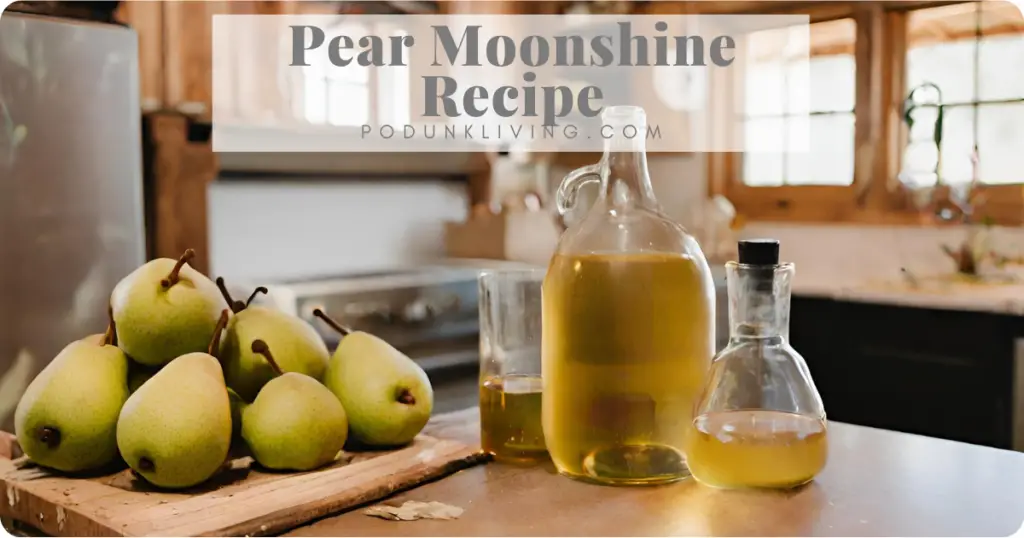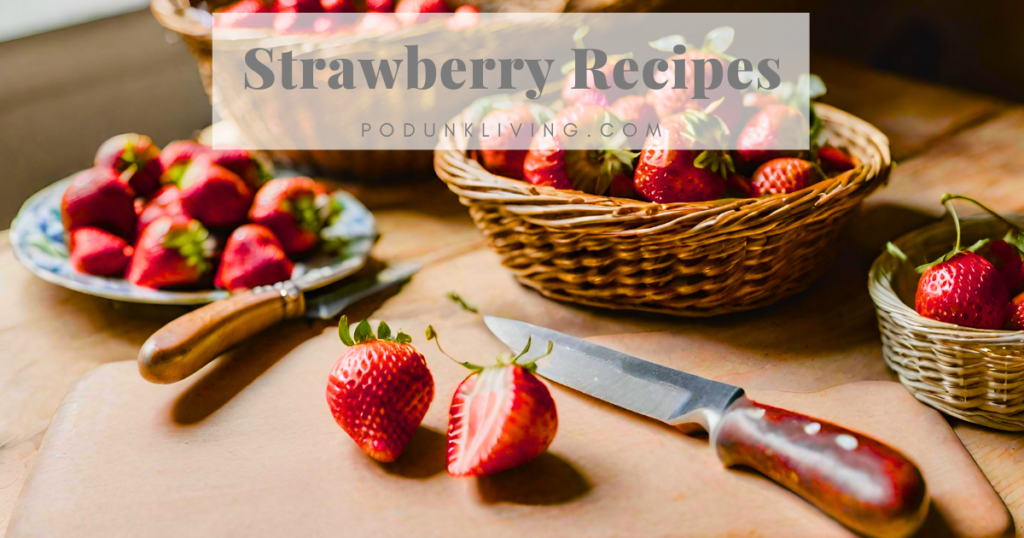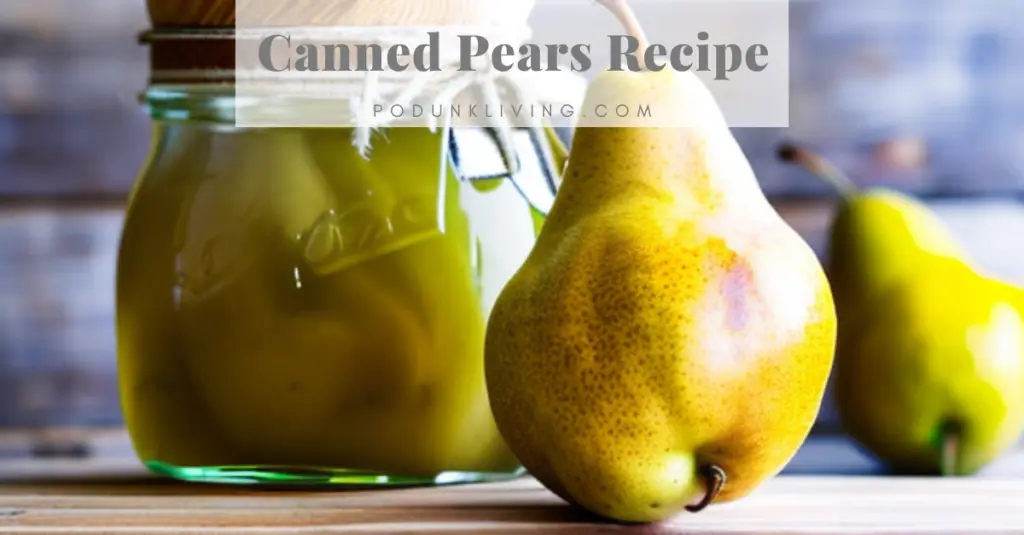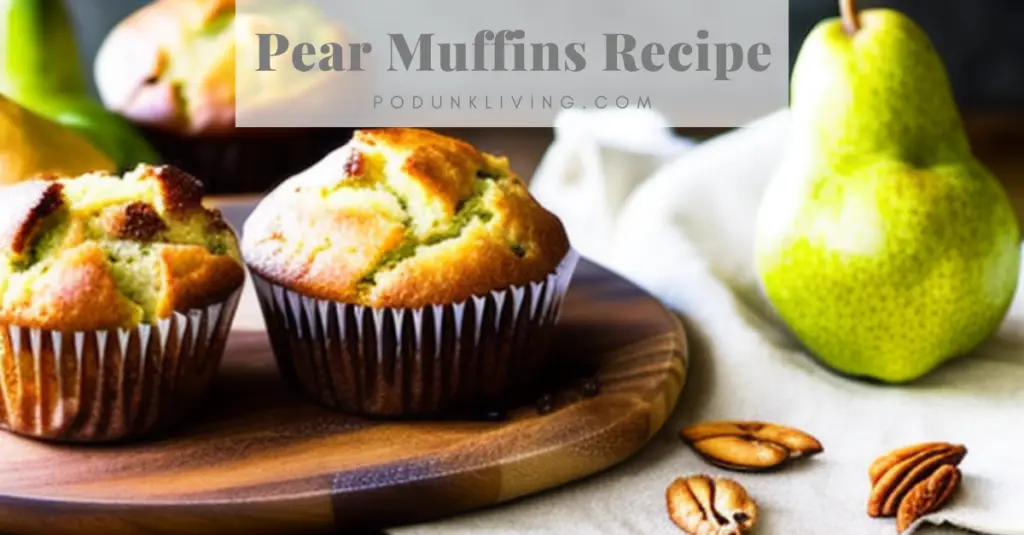The Best Pear Recipes for Pears Season
August is the time when pears are ready for harvest. If you have a mature pear tree, you probably have so many pears that you’re not sure what to do with all of them. Pears are always good as a dessert dish, or served well with a scoop of vanilla ice cream. We have some delicious but uncommon pear recipes that will use up your bountiful harvest of pears (including cocktails recipe that doesn’t require peeling or slicing). This article has the best pear recipes, the health benefits of pears, and a guide to growing pears, harvesting pears, and storing pears.
Health Benefits of Fresh Pears
Pears have been used in traditional Chinese medicine for over 2,000 years. In addition to containing a lot of nutrients, pears have diuretic effects, anti-hyperglycemic, and anti-inflammatory properties. Pears work wonders to aid alcoholic hangovers, suppress cough, and relieve constipation. Pears have also demonstrated gastrointestinal benefits, including anti-ulcer effects. This is due to the potent antioxidant property of pears. Another study showed that an increase in the intake of pears resulted in a decrease in stroke occurrence. Increased consumption of pears also resulted in a decrease in type 2 diabetes. Diabetes prevention is due to the elevated levels of anthocyanin in pears. Pear juice, however, increased the occurrence of diabetes, most likely due to the added sugars in pear juice. Cardiovascular disease occurrences also decreased with increased pear consumption. Coronary benefits are due to the high levels of flavonoids found in pears. Pears are also a rich source of fiber, vitamin C, and potassium. You can read more about the health benefits of pears here.
Common Pesticides Applied to Pear Fruit
Pyrimethanil is a fungicide used to control mold on fruit, vegetables, and ornamentals, and was introduced to the agricultural industry at some point in the 1990s. Studies have shown that pyrimethanil is an endocrine disrupting chemical, and has negative health effects on the liver, kidneys, and reproductive systems. Chronic exposure to pyrimethanil at low concentrations has been demonstrated to cause liver damage, infertility in females, and kidney function. Other studies have shown that pyrimethanil causes a delay and alteration in gonad development, and can influence sexual hormone synthesis and receptors. This affects many sex-pattern ailments like migraines in women, schizophrenia in men, and fibromyalgia in women. You can learn more about pyrimethanil here.
Fludioxonil is a fungicide with antibiotic properties, and is often applied to fruits, vegetables, and cereals. It was developed in 1993, and is commonly used today. Fludioxonil has a growing list of concerns of chronic health effects. Toxicologists have determined that fludioxonil is an endocrine disrupter in human breast cells. There is growing concern about the oxidative stress that chronic fludioxonil induces. Fludioxonil has the potential to elevate nitric oxide and methylglyoxal levels throughout the body, which can cause insulin resistance, hypertension, chronic chest pain (coronary artery constriction), and cardiovascular disease. Oxidative damage has also been reported with chronic exposure to fludioxonil, meaning younger development in “aging” diseases like Alzheimer’s, diabetes, and cancer. When exposed to fludioxonil prenatally and at young ages, there is a concern for the development of autism, juvenile diabetes, inflammatory bowel disease, and multiple sclerosis. You can learn more about fludioxonil here and also here.
Captan is a fungicide used in agriculture since 1951. It is commonly applied to fruits like strawberries, peaches, apples, pears, raspberries, cherries, blueberries, and prunes. Studies have shown that captan has cancer-causing potential (more studies are needed to prove this). These cancers include small intestinal cancer and kidney cancer. Genetic effects of captan include central nervous system defects, limb defects, cleft palate, hydrocephalus, and other head defects. You can learn more about captan here.
Pear Season
Pears are ready for harvest in August in zones 4 through 6, and at the end of July in zones 7 and 8. There are a few varieties of pears that will grow in zone 9, but typically won’t grow in zone 10.
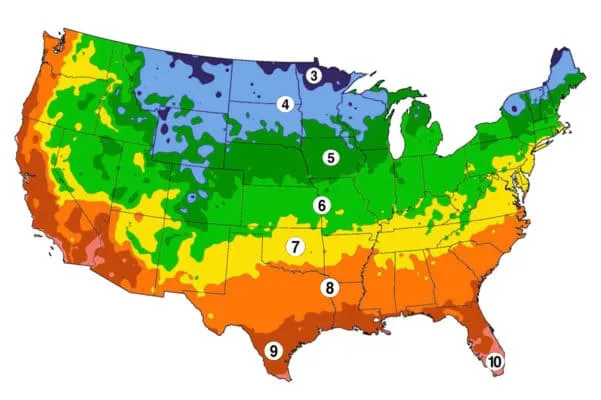
How to Grow Pears for Your Favorite Recipes
Pears are a perennial fruit, meaning they come back every year. Pears grow on a pear tree, and can be pruned yearly from a young sapling to grow as a hedge, or tight against a fence line. Most pear trees require winter temperatures at or below freezing. In order to produce fruit, pear trees should be planted in pairs for cross-pollination. Self-pollination without a second tree is possible, however, there tends to be less fruit production. Pruning a pear tree in late winter also helps fruit production the following year, as a heavy pruning session could reduce the fruit yield that summer. A good rule of thumb on pruning pear and apple trees, is to picture being able to throw a cat between the branches of the tree. You can shred and save the branches for smoking meats this summer (pear chips give off an excellent flavor).
Planting Pear Trees
Pear trees are sold in nurseries, usually already a few feet tall. Pear trees prefer a sunny location with well draining soil, however, they will tolerate partial shade. Pear trees can self-polinate, however, for a large crop, plant at least 2 trees, about 20 feet apart for proper cross pollination. Pear trees should be planted in the early spring, usually before the last frost date. You can get your exact frost dates using your zip code from the Farmer’s Almanac.
| Zone | Last Frost Date |
|---|---|
| Zone 3 | June 15 |
| Zone 4 | June 1 |
| Zone 5 | May 15 |
| Zone 6 | May 1 |
| Zone 7 | April 15 |
| Zone 8 | April 1 |
| Zone 9 | March 15 |
When planting pear trees, make sure to dig the hole larger than the root ball. This helps to aerate the soil, and make it easier for the roots to grow and establish. The roots are the lifeline of the tree, so be supportive of them! Water them excessively in the morning for the first month, and then you can ease up a bit. Make sure you water them in times of drought, especially on those hot summer days. (I have an alert on my phone to water my plants when we go 7 days without rain, to prevent stress on my plants.) By fall, they will be low maintenance, and mostly hands off after their first year. After a couple of years, they’ll need some pruning in late winter, and a couple of years later you’ll be enjoying your fresh pears!
Harvesting Pears
Depending on your zone and pear variety, pears are typically ready for harvest in August. For optimum taste, pears need to be harvested before they are ripe, and will ripen within 1 – 2 weeks after harvest. The sweetness of the pears will increase as they ripen, and the texture will soften. The Asian pear variety will keep a cruchy texture, similar to an apple. Pears are ready to be picked when they are easily pulled from the tree. I notice that pears are ready to be picked, when they first start falling from the tree. (I see a few of them on the ground when I mow.) A mature pear tree can yield 150 pounds of pears (if planted with a cross-pollinator), or about 75 pounds of pears if self-pollinating. A dwarf tree will yield about half of a full size tree. Pear trees should start producing fruit in 3 to 7 years after planting, depending on the age of the tree when planted. Patience is important when starting a fruit orchard. As your pear tree grows taller, you’ll want to invest in a good fruit picker (Amazon affiliate link).
Storing Pears
- Room temperature: Unripe pears will ripen at room temperature in about 7 to 14 days. Once ripe, pears can be stored at room temperature for an additional 2 to 4 days, or 1 to 2 weeks in the refrigerator.
- Refrigerator shelf life: Many people will tell you not to store unripe pears in the refrigerator, however, I immediately pull a dozen or two pears from my harvest for the fridge for fresh eating later. I have been able to keep unripe pears in the fridge for several weeks, and allow them to ripen on the counter for a few days before eating. I haven’t noticed a difference in quality, as the pears still taste amazing to me! It is quite possible that preservatives applied to store-bought pears might interfere with refrigeration and ripening, which is why refrigerating unripe store-bought pears is not recommended.
- Freezing: Slice clean pears into slices, and dunk them in a lemon juice bath, using 1 Tablespoon of lemon juice per cup of water to prevent browning (this won’t affect the flavor of the pears). Arrange the pear slices on a baking sheet lined with parchment paper. Flash freeze the pear slices on a baking sheet until frozen solid, about 1 – 2 hours. Then transfer the frozen pear slices to freezer storage containers, and store them in the freezer for
- Canning: Wash, peel, and slice pears, and dunk them in a lemon juice bath using 1 Tablespoon of lemon juice per cup of water to prevent browning. Transfer pear slices to a stock pot of boiling light syrup, and cook for 5 minutes. Ladle into jars, and process in a water bath canner for 20 minutes for pints and half-pints, or 25 minutes for quarts. Check out our Canning Pears Recipe.
Taste the Easy Pear Recipes
Sources
- https://www.ncbi.nlm.nih.gov/pmc/articles/PMC5537256/
- https://www.ncbi.nlm.nih.gov/pmc/articles/PMC6770511/#:~:text=Fludioxonil%20showed%20endocrine%20disruptor%20activity,cells%20%5B8%2C9%5D.
- https://www.ncbi.nlm.nih.gov/pmc/articles/PMC6322420/

